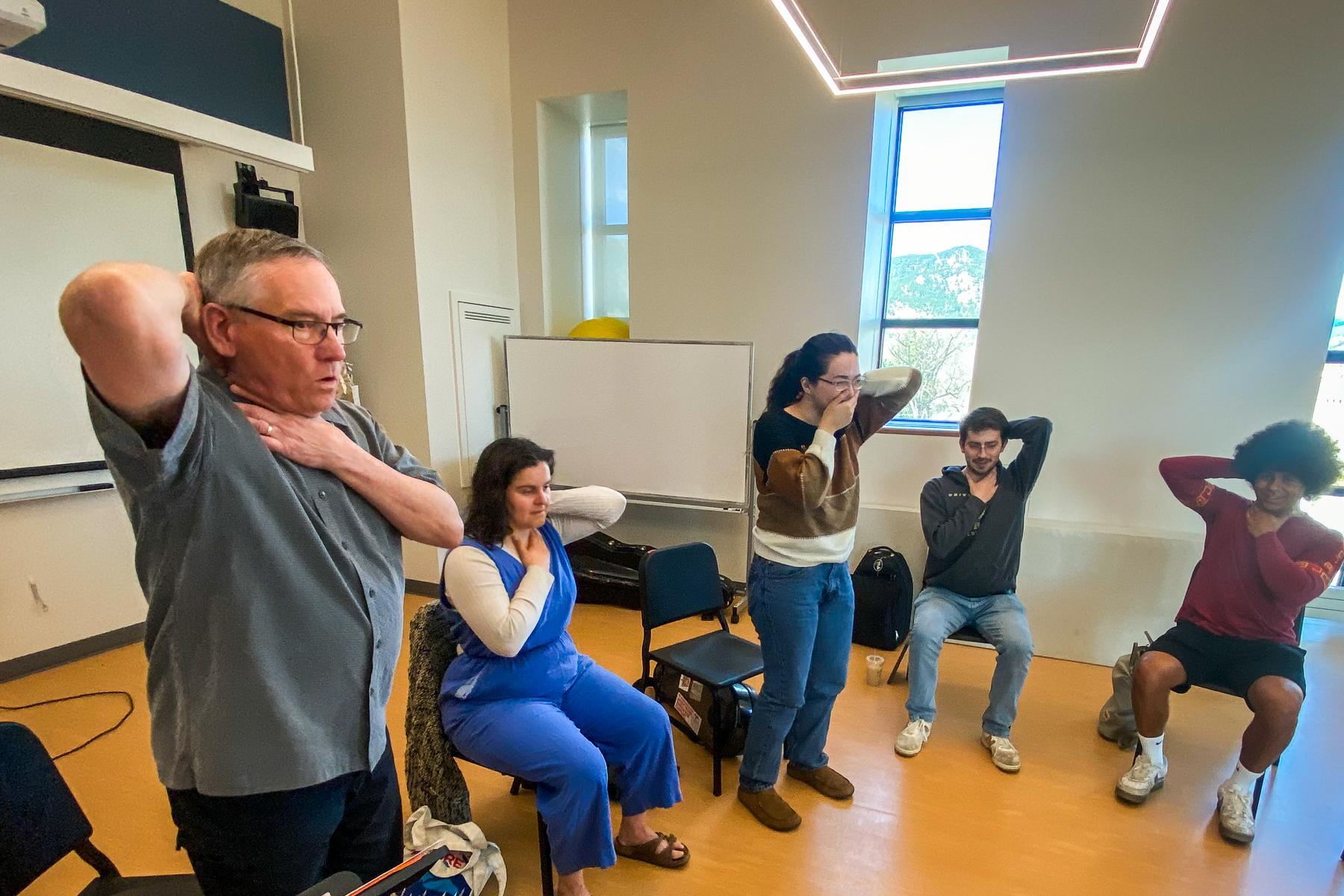
Up and down the halls of a building at the University of Colorado in Boulder, you can hear it. In one small practice room a student runs through scales on the oboe; in the next room another student teases out a lovely melody on the keys of a piano.
They're putting in the time, the effort, the energy to get better.
On the third floor of the Walter Imig Music Building, in a room with one of the town’s best mountain views, you find professor Jim Brody presiding over a class of musicians. They are not playing scales or working on technique or music theory. They are learning about wellness.
What does all this have to do with music? Everything, said Brody.
Six students are here. In an hour and half class, Brody has them standing on one foot, at another point, placing one hand at the base of their neck and another at the back of their skull and later lying on their backs on foam yoga mats and breathing deep.
“When people come by on a tour of the building, prospective students, and the dad will say, ‘I didn't know the musicians got injured.’ It's like, ‘well, yeah, we do.’
Studies estimate most pro musicians experience playing-related pain or injuries from overuse or misuse and mental health struggles.
A couple of decades ago, seeing the damage, Brody, an associate professor of oboe, pioneered CU’s Musician's Wellness Program, one of the first of its kind.
“It's starting to be more common. We may not have been the first, but if we weren't the first, pretty close to it,” said Brody, who retires as the program’s director in July, after 47 years of teaching.
One focus of his program is on the body. In the corner of the room is something you’d expect in a biology classroom, but maybe not in a music building: a model of a human skeleton. To the other side of the room is a skull.
Asked if he uses them, Brody said enthusiastically “absolutely. And it's very helpful to understand about joints, but that's not the whole picture. There's lots more going on.”
In Brody’s class, he teaches his students about a variety of exercise techniques for breathing and avoiding injury, plus maximizing optimal overall health.
“If nothing else, resting your being is a terrific thing to do. Rest is not as valued in our society as it should be,” said Brody, who wears eyeglasses and a gray shirt.
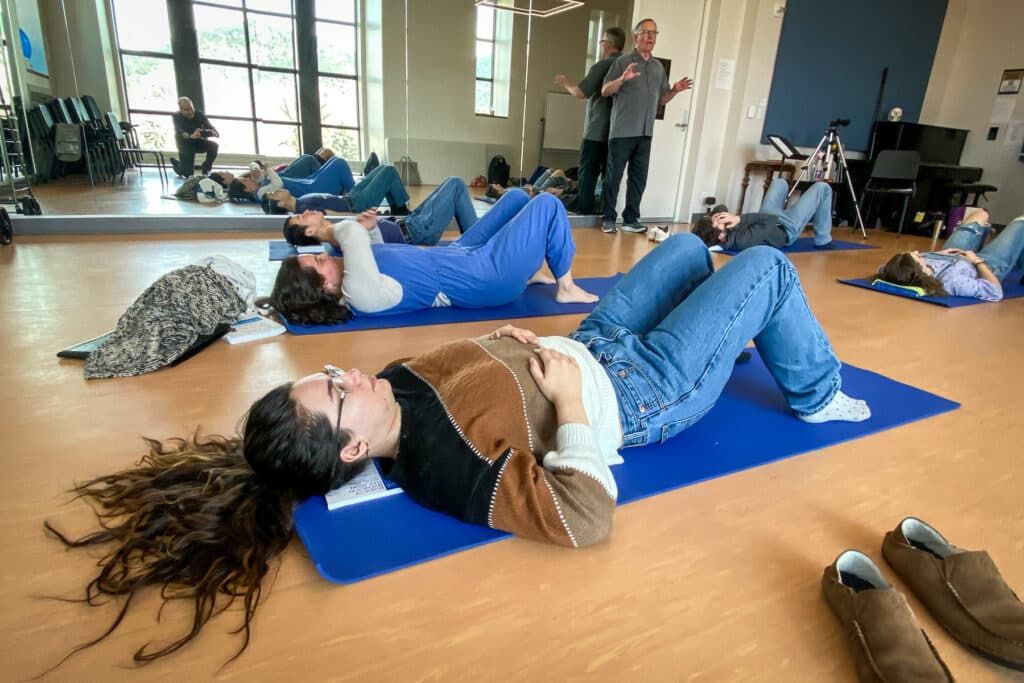
He also teaches them about things like the mind-body method called the Alexander technique, which focuses on the importance of posture, mobility and focus to relieve pain, tension and stress.
Senior Bryce Kayser, who plays viola, said what he’s learned from Brody has made him stronger.
“My stamina feels like it's the highest it's ever been, and I can play for much longer periods of time without getting tired, without feeling tense,” Kayser said.
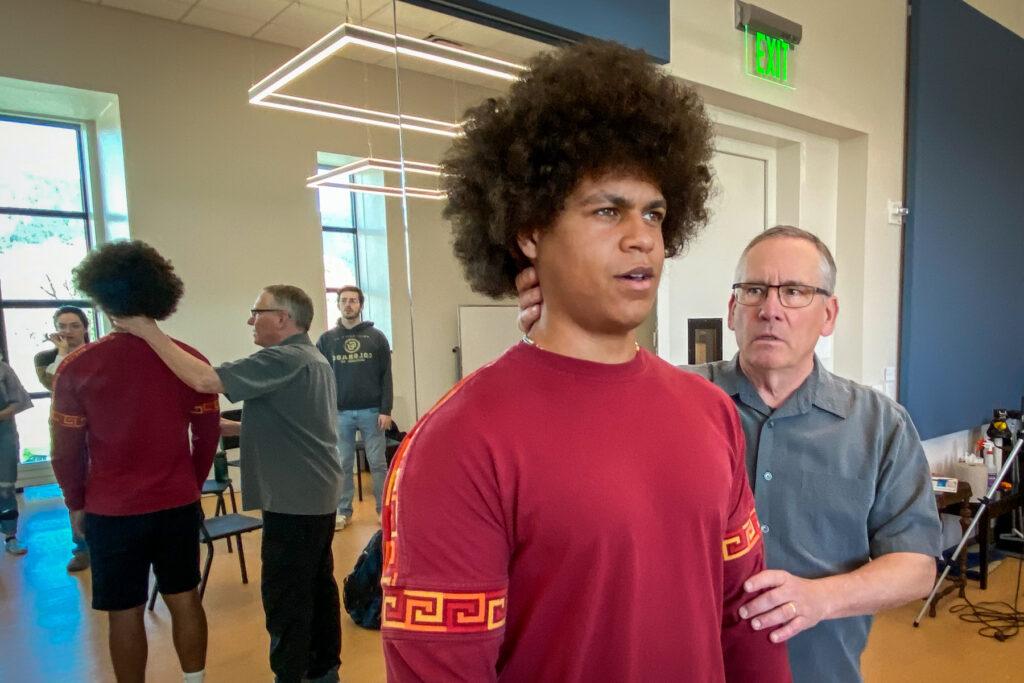
“When it comes to not just playing in general, but when it comes to performance, there's a lot to think about,” said Tim Scott, a sophomore who plays the flute. He said the class has made a difference by teaching him how to release tension when playing, which he thinks will help him avoid injuries.
“It's understanding how to use your own body in the most natural way,” said Jordan Spivack, a French horn player with a background as a high school orchestra and band director. He said the techniques work not just to musicians, but dancers and artists. “It applies to every aspect of our lives.”
They also learn about mindfulness, psychology, how to manage stress and performance anxiety. The program even has its own psychotherapists. One is Matthew Tomatz who studied trumpet in music school.
“It's a very difficult pursuit. And part of that is blood, sweat and tears, and that can lead toward injury. It can lead toward discouragement,” or even quitting altogether, said Tomatz, who draws on experiences as a psychotherapist, educator, yoga and meditation instructor.
Tomatz started a group therapy program called Developing the Whole Musician. It focuses on performance anxiety being social anxiety, something students can wrestle with together.
“I think one of the things that sets musicians apart is the vulnerability of the task,” said Tomatz.
It takes immense dedication and practice, intense concentration and, in performance, it’s all on public display. Tomatz credits Brody with teaching students a way to work with their mind and body to find longevity in music instead of being overwhelmed by it.
“I think the program that he built is an antidote to that.”
Julia Emery, a master’s student who plays the cello, said the mental health elements of the program were most valuable in managing both musical and everyday stress, “Usually it's not one or the other. Everything happens at the same time,” Emery said. “Just learning how to be a full human being, I think this has been a really helpful experience.”
Masters student Taylor Sapanara plays the viola. During class, Brody recorded a video of her playing so she can see later what her posture, breathing and motions look like. She said her forearms are tense because she’s been rockclimbing.
This is Boulder after all.
“So they're very tight,” she said.
“Do you do anything after you've climbed to help release out of that pattern,” Brody asked.
“I do some stretches afterwards,” she replied.
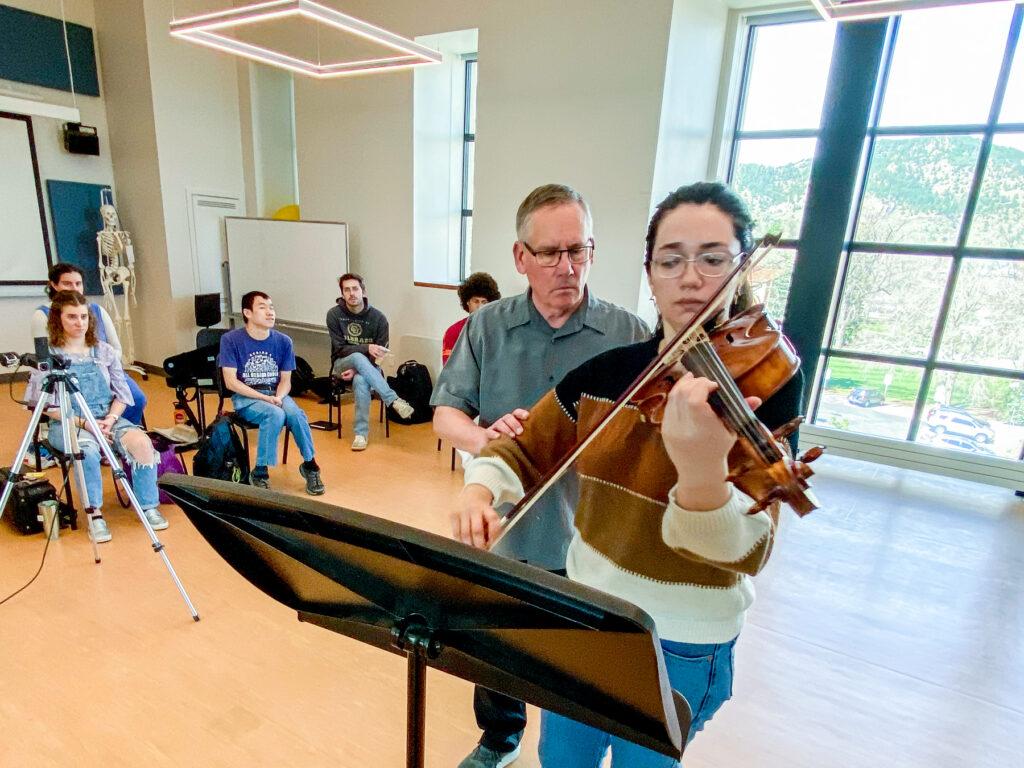
Sapanara said she struggles with her mental health and that a “mental interference” prevented her from playing as well as she wanted. That changed thanks to the programs counseling services.
“I think this program has completely changed me as a performer. When I pulled my viola out, I was like, ‘Oh my God, I love playing the viola for people,’” she said. “A few months ago, that would've not been what I said. I would have been very frustrated and upset that I had to play.”
Brody likens both the physical and mental work of his musicians to the task of CU’s Coach Prime, with the preparation and workout of, say, a violinist furiously playing a high energy Wagner Opera not being so different from the Buffs seeking peak performance on the football field on game day.
At the Buffs stadium, Folsom Field, there’s a “really great facility where if somebody on Coach Prime's team gets hurt, they have a huge support system down there. We should too,” Brody said.
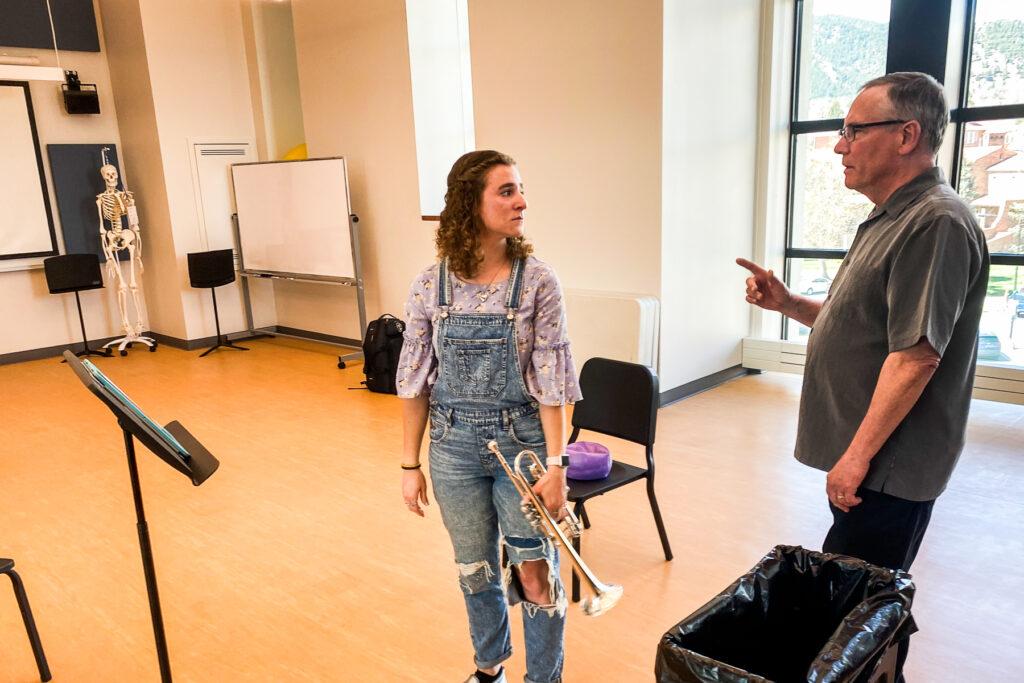
Sydney Hoehl, a graduate student studying trumpet said she’s indebted to Brody for teaching techniques for improving her wellness, in the face of pressures, to make a performance perfect or win a competition.
“We are athletes with micro muscles,” said Hoehl. “We train the same way we have to perform like them. And our mental game is just as important as it is for an athlete.”
At the end of the day, Brody says he’s happy to have been part of a broader movement to help music students see their full potential and be their best in a world that can be unforgiving by learning what really are universal life skills.
“All these principles are good for anybody in any situation,” Brody said.








